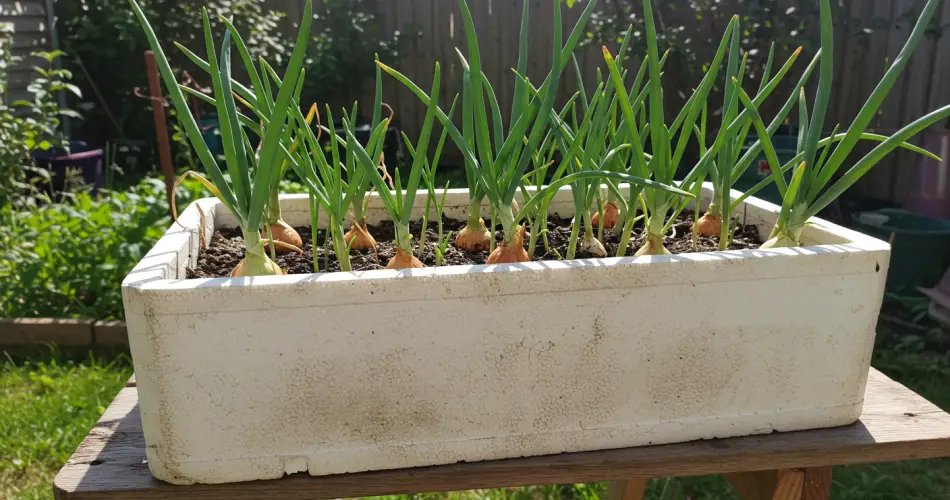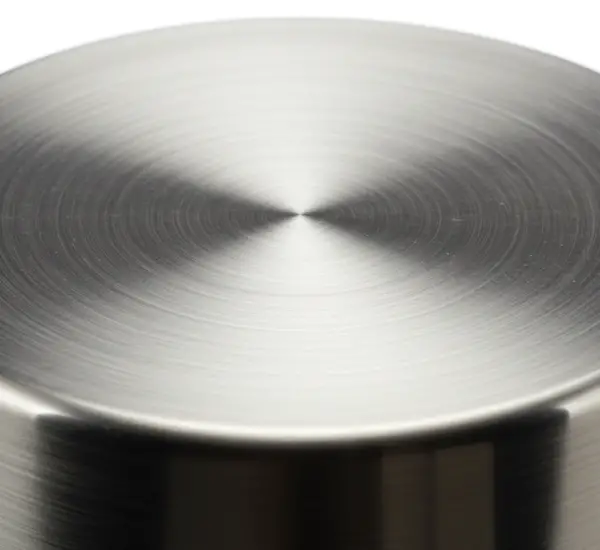Onions and garlic are staples in kitchens around the world. Not only are they essential ingredients that add flavor and aroma to countless dishes, but they also come with an impressive nutritional profile and a variety of health benefits. What many people don’t realize is that these two crops are also very easy to grow at home. You don’t need a large garden or special equipment—just a bit of space on your balcony or terrace, some good soil, and even an old Styrofoam box that you might otherwise throw away.
In this guide, you’ll learn why onions and garlic are worth including in your home garden, the best way to prepare and plant them, and how to grow them successfully using a simple recycled container.
Nutritional Benefits of Onions and Garlic
Both onions and garlic are nutrient-dense and have been valued in traditional diets for centuries.
-
Onions are a good source of carbohydrates, dietary fiber, folate, and vitamins C and B6. They also provide potassium and contain small amounts of calcium, iron, magnesium, phosphorus, and zinc.
-
Garlic offers many of the same nutrients, including vitamin C, vitamin B6, manganese, and trace minerals. It’s also well-known for its natural compounds that support heart health, boost the immune system, and may help lower cholesterol.
Consuming these foods regularly, whether raw or lightly cooked, adds both flavor and nutrition to your meals.
Raw or Cooked: How to Maximize Benefits
Cooking can change the nutrient content of onions and garlic, so it’s useful to know how to prepare them to retain as many health benefits as possible:
-
Onions: Eating them raw or lightly cooked is best for preserving vitamin C and antioxidants. Sliced raw onions are perfect in salads or sandwiches, while slow, low-heat cooking helps maintain their natural sweetness without losing too many nutrients.
-
Garlic: Raw garlic is the most powerful in terms of health benefits, thanks to allicin, a compound that breaks down when exposed to heat. For the best results, crush or chop garlic and let it sit for a few minutes before eating raw, or add it toward the end of cooking to preserve its properties.
Choosing and Storing Onions and Garlic
When buying onions and garlic, always choose firm bulbs with dry outer skins. Store them in a cool, dry place with good air circulation. Avoid keeping them in sealed plastic bags, which can trap moisture and lead to sprouting or mold.
Before use, peel away the outer layer and prepare them according to your recipe—slicing, chopping, or crushing as needed.
Growing Onions and Garlic at Home
The great news for anyone who loves fresh produce is that both onions and garlic are among the easiest crops to grow at home. They don’t require much space, making them ideal for small gardens, balconies, or even a sunny windowsill.
A surprisingly effective and budget-friendly method involves using old Styrofoam boxes—like the kind often used for transporting food. Instead of discarding them, you can recycle these containers into mini-gardens.
Step 1: Prepare Your Styrofoam Box
-
Choose a Styrofoam box with a lid, as these are sturdy and easy to modify.
-
Using a plastic bottle cap as a guide, mark circles on the lid and cut out small holes with a sharp knife or cutter. These will serve as planting holes where the bulbs can be placed.
-
Separate the box into two parts: one half will hold the bulbs, and the other can serve as a tray to catch water, preventing mess on your balcony or indoors.
Step 2: Prepare the Bulbs
-
Select small onions and garlic cloves. Trim the dried roots at the base with scissors.
-
Make a shallow cut at the pointed tip of each bulb—this encourages sprouting.
-
Place the bulbs root-side down into the holes you cut in the lid of the Styrofoam box.
Fill the bottom half of the box with a little water so that the trimmed roots of the bulbs touch it lightly, almost like a hydroponic system.
Step 3: Watch Them Sprout
The transformation is quick. Within a day, you’ll notice tiny new root hairs emerging from the base of the bulbs. Shortly after, green shoots will start to appear above the surface.
By day five, roots will be noticeably longer, and the green shoots will be stronger and taller. This means your onions and garlic are ready to be transplanted into soil for further growth.
Step 4: Plant in Soil
-
Prepare another Styrofoam box (or any container) by making drainage holes in the bottom.
-
Fill it with well-draining soil. A mix of garden soil and compost works best.
-
Plant onion bulbs about 2.5 cm (1 inch) deep and space them 10 cm (4 inches) apart.
-
Plant garlic cloves with the pointed side facing upward, also at about 2.5–3 cm depth, and space them 8–10 cm apart.
Water regularly to keep the soil moist but not soggy. Good drainage is crucial to avoid rotting.
Step 5: Care and Harvest
-
Place the containers in a sunny location. Onions and garlic thrive with at least six hours of sunlight per day.
-
Water moderately. Overwatering can harm the bulbs, so ensure the soil remains moist but never waterlogged.
-
After a few weeks, you’ll have fresh green shoots. These can be harvested and used as spring onions or garlic greens.
-
Allow bulbs to mature for several months if you want full-sized onions and garlic heads. You’ll know they are ready when the green tops start to yellow and fall over.
Final Thoughts
Onions and garlic are not only healthy and delicious but also incredibly easy to grow, even for beginners. By reusing something as simple as a Styrofoam box, you can create a sustainable mini-garden right at home.
In just a few days, you’ll see your bulbs come to life with fresh roots and shoots. With regular care, water, and sunlight, you’ll soon have your own supply of homegrown onions and garlic—fresh, organic, and bursting with flavor.
It’s a rewarding project that saves money, reduces waste, and puts healthy food directly on your table. So before you throw away your next Styrofoam container, consider turning it into the starting point of your very own kitchen garden.



